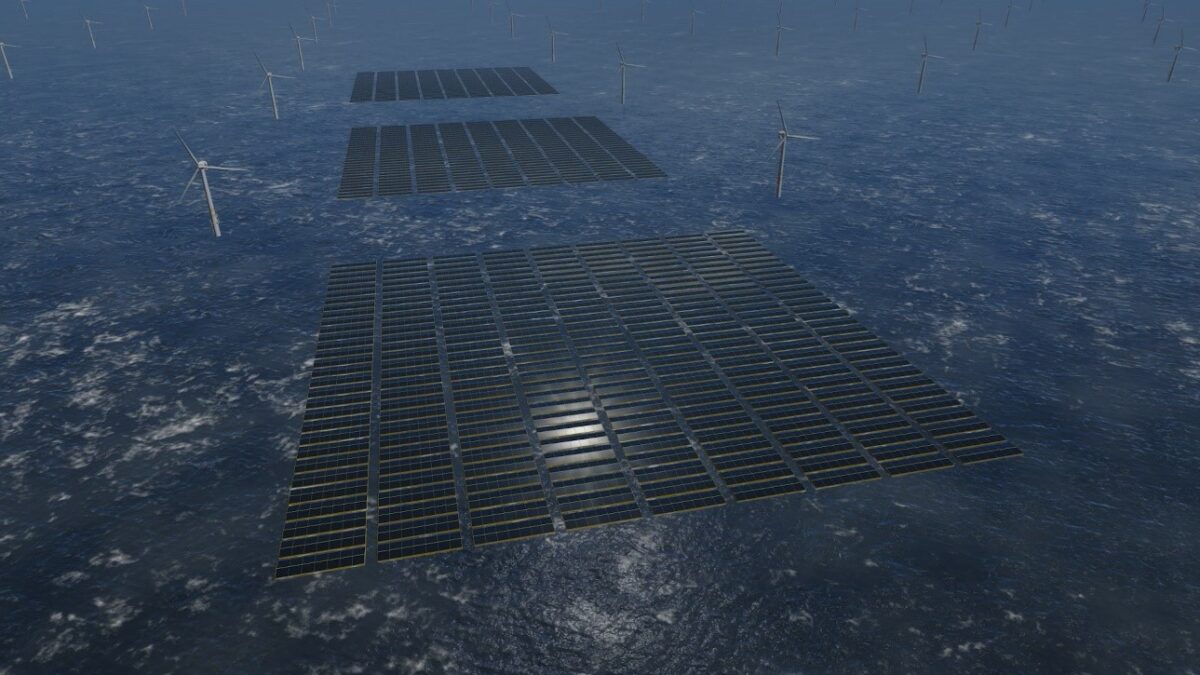An EU Joint Industry project aims to scale up offshore solar technology to standard formats of 150 MW, enabling the building of gigawatt-scale offshore solar farms.
Led by Oceans of Energy, in collaboration with 15 European partners, the project could become a new standard for offshore energy farms.
The proposed solar farms will be placed within offshore wind farms, which Oceans of Energy says will make better use of sea space, increase energy output and provide more continuous power over the seasons, while driving down costs for green electricity production and the energy system.
The co-located offshore solar and wind farms would use the same grid connection, which Oceans of Energy says will reduce the need for investments in expanding the energy system.
“Oceans of Energy is proud to advance offshore solar further towards a real gamechanger in the renewable energy transition, by bringing these standardized, large scale offshore solar farms to the world,” said Allard van Hoeken, CEO of Oceans of Energy.
“Offshore solar is becoming a major contributor to the energy transition in the North Sea. We are kickstarting the development of a standardized offshore solar building block, which fits right in between four offshore wind turbines. This allows for optimized multi-source offshore energy farms without competing for scarce and limited land space.”
Popular content
The project will also contribute to developing international standards and testing methodologies for offshore technology, through work carried out by testing laboratories MARIN, Fraunhofer CSP and SIRRIS, which are three of the project’s partners.
It is hoped the project matures the technologies and attracts funds allowing for a 100 MW to 200 MW offshore solar farm to be built at an offshore wind farm owned by Vattenfall, another one of the project’s partners, before the turn of the decade.
Oceans of Energy deployed the world’s first offshore solar farm, a 50 kW modular PV system, in the Dutch North Sea in 2019. It is currently building the first offshore solar farm to be installed within an offshore wind farm, at the Shell/Eneco Hollandse Kust Noord wind farm in the North Sea.
A report from DNV GL in December 2020 predicted that the North Sea could host around 100 MW of floating solar capacity by 2030, and 500 MW by 2035.
This content is protected by copyright and may not be reused. If you want to cooperate with us and would like to reuse some of our content, please contact: editors@pv-magazine.com.


By submitting this form you agree to pv magazine using your data for the purposes of publishing your comment.
Your personal data will only be disclosed or otherwise transmitted to third parties for the purposes of spam filtering or if this is necessary for technical maintenance of the website. Any other transfer to third parties will not take place unless this is justified on the basis of applicable data protection regulations or if pv magazine is legally obliged to do so.
You may revoke this consent at any time with effect for the future, in which case your personal data will be deleted immediately. Otherwise, your data will be deleted if pv magazine has processed your request or the purpose of data storage is fulfilled.
Further information on data privacy can be found in our Data Protection Policy.